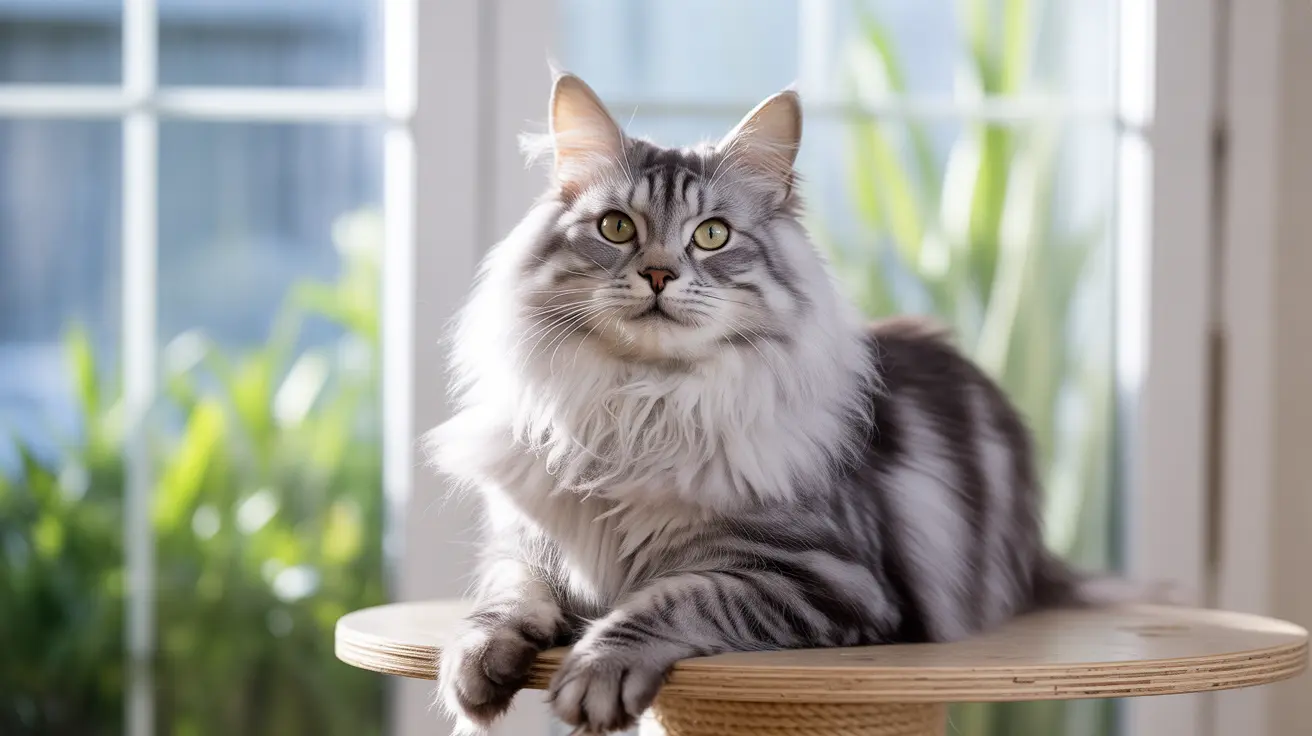The Rich History of Norwegian Forest Cats
Dating back to ancient Norse mythology, Norwegian Forest Cats have deep roots in Scandinavian culture. These cats were believed to be companions to Vikings, serving as skilled ship's cats that kept rodent populations under control during long sea voyages. Their natural adaptation to harsh Nordic winters helped them develop their distinctive physical features, including their water-resistant double coat and tufted paws.
After nearly facing extinction in the early 20th century, dedicated breeding programs in Norway helped restore and preserve this magnificent breed. Today, Norwegian Forest Cats are celebrated worldwide while maintaining their special status as Norway's official cat breed.
Distinctive Physical Characteristics
Norwegian Forest Cats are known for their impressive size and sturdy build. Males typically weigh between 12-16 pounds, while females range from 9-12 pounds. Their most striking feature is their luxurious double coat, consisting of a dense, woolly undercoat protected by a water-resistant outer layer.
- Triangle-shaped head with straight profile
- Large, almond-shaped eyes
- Tufted ears reminiscent of lynx tips
- Long, bushy tail
- Strong, muscular body
- Large paws with tufts between toes
Temperament and Personality
Despite their wild appearance, Norwegian Forest Cats are known for their gentle and sociable nature. They form strong bonds with their families while maintaining an independent streak that makes them relatively low-maintenance companions. These cats are patient with children and generally get along well with other pets.
- Intelligence and problem-solving abilities
- Playful nature well into adulthood
- Strong climbing instincts
- Moderate activity levels
- Quiet, chirping vocalizations
Care and Maintenance
Caring for a Norwegian Forest Cat requires dedication to their grooming needs. Their thick double coat requires regular attention, especially during seasonal shedding periods. Daily brushing helps prevent matting and reduces hairball formation.
- Large cat trees or climbing structures
- Interactive toys for mental stimulation
- Regular veterinary check-ups
- High-quality diet appropriate for their size
- Fresh water sources, as they enjoy drinking
Living Environment
Norwegian Forest Cats adapt well to various living situations but thrive in homes that provide vertical space for climbing. They appreciate having access to windows for bird watching and secure outdoor enclosures if possible. Their thick coat makes them particularly well-suited to cooler climates, though they can adapt to warmer environments with proper care.
Frequently Asked Questions
How often should I groom my Norwegian Forest Cat to keep its thick double coat healthy?
Norwegian Forest Cats should be groomed 2-3 times per week during regular seasons and daily during shedding seasons (spring and fall). Use a steel comb and slicker brush to prevent matting and maintain coat health.
What are the common health issues to watch for in Norwegian Forest Cats?
Common health concerns include hypertrophic cardiomyopathy (HCM), hip dysplasia, and glycogen storage disease type IV. Regular veterinary check-ups and genetic testing can help monitor and prevent these conditions.
What types of coat colors and patterns are typical for Norwegian Forest Cats?
Norwegian Forest Cats come in nearly all colors and patterns except pointed colors. Common variations include solid colors, tabbies, tortoiseshells, and bi-colors. White, black, blue, red, and cream are all accepted colors.
How can I best care for and feed a large, active Norwegian Forest Cat?
Provide high-quality protein-rich food appropriate for their size and activity level. Establish regular feeding schedules, ensure fresh water availability, and include both wet and dry food in their diet. Regular exercise through play and climbing opportunities is essential.
What personality traits make Norwegian Forest Cats good family pets?
Norwegian Forest Cats are known for being gentle, patient, and sociable while maintaining independence. They're good with children, other pets, and adapt well to family life. Their intelligent and playful nature makes them engaging companions without being overly demanding.






